According to NASA, Saharan dust is made up of a mix of minerals including clay and iron, as well as organic material such as pollen and micro-organisms. It travels across the Atlantic at about 5,000 feet above the ocean and sometimes crosses the Gulf of Mexico all the way to the Texas coast. See NASA's 2013 Hurricane Mission to Delve into Saharan Dust
The amount of dust varies from year to year and can produce very colorful sunrises and sunsets. Last year our early morning skies turned bright pink, and I also witnessed an unusual "mirrored sunrise" directly west of the actual sunrise. See my blog that has photos of these events: Egrets under pink skies.
On August 4, minutes after a golden sunrise, I took this photo of the sky, looking west over the wetlands preserve next to our home. This viewpoint is almost the exact spot from which I witnessed last year's "mirrored sunrise."
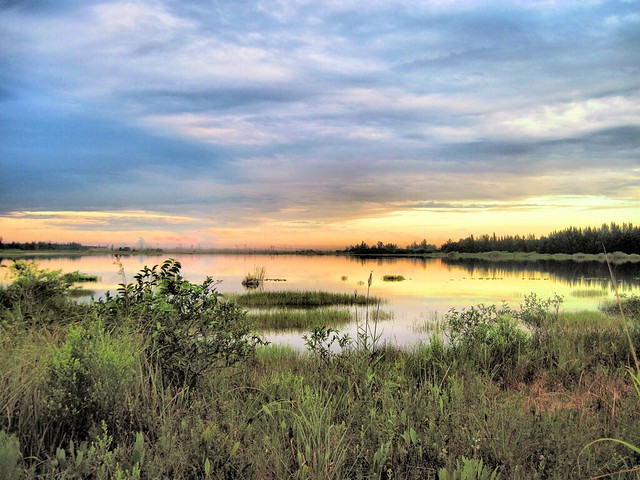
Falling water levels isolated a patch of water from the lake. The surface of the water rippled as small fish struggled to gape air. I frightened several herons that were feeding there. The soft morning light imparted a gentle glow that enhanced the stark white plumage of an adult Black-crowned Night-Heron as it alighted atop a shrub.

The heron had piercing red eyes.

Two Green Herons flew up from the area. An adult bird with solid rufous neck feathers is on the right, while a streaked immature is opposite it.
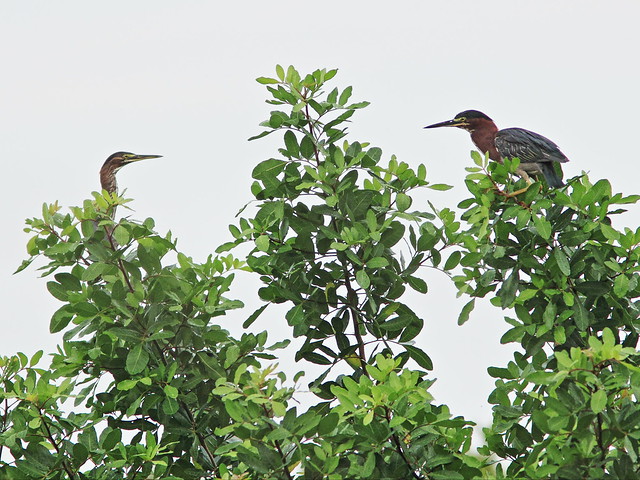
A juvenile Red-shouldered Hawk occupied the top of a power pole.
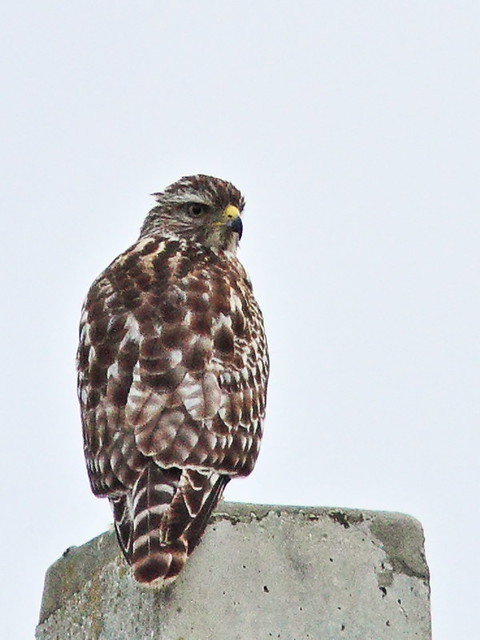
On the gravel road, a pair of Common Ground-Doves looked for breakfast.
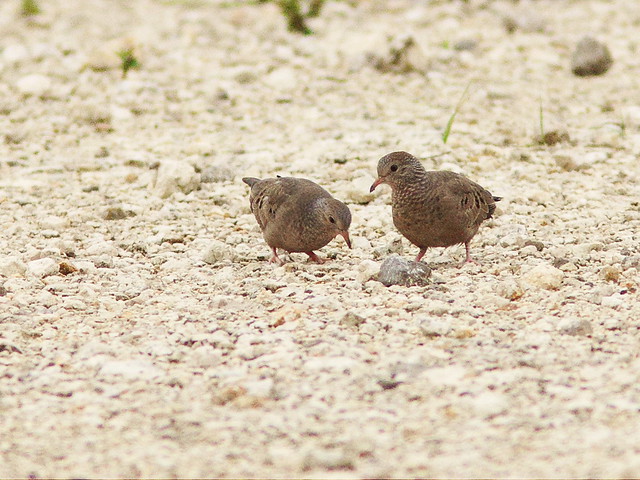
Ground-doves can be quite wary. I was lucky to get fairly close to this male who lingered on the path after his mate and one young bird flew into a nearby tree.
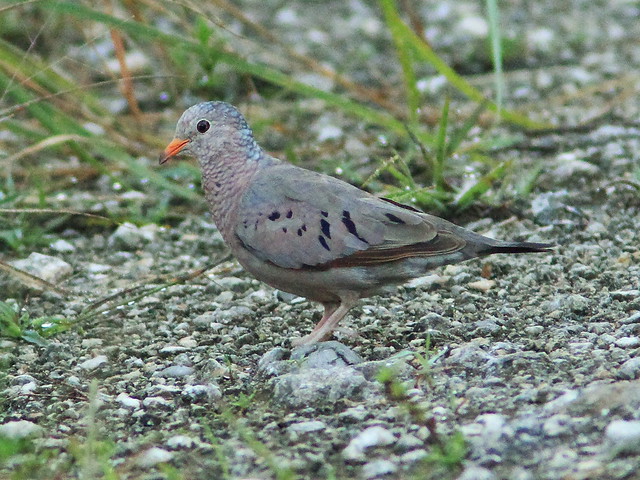
Although the birding was not particularly good that morning, on my way back home I stopped again to snap a photo of the clouds from a muddy trail on a berm that covers a stormwater culvert leading out into the lake. The sky had a pink cast but the color did not show up well. I would not have posted this photo except for what I did NOT see. If you click on the photo you will see a larger image with a box in the lower edge of the image that shows where a poisonous Cottonmouth moccasin was hiding.

I did not notice the snake until I took a couple of steps forward. That was when I caught the movement of its white gape in my peripheral vision. It was so well obscured by the sedge and grass stems that I would not have seen it at all. Note the triangular head, black mask and elliptical pupils. Like all poisonous pit vipers, it has a heat-sensing pit between its eye and nostril.
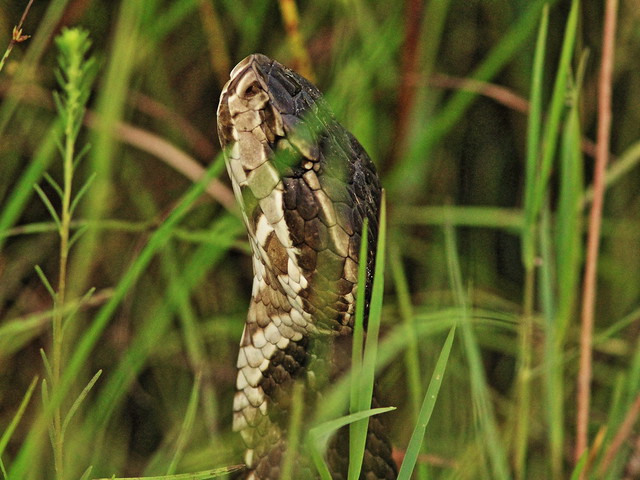
Not planning to walk in high grass, I did not wear my snake boots that morning. The Cottonmouth was a good three feet away with most of its body in the water but it did coil and threaten when I maneuvered around to get a better photo. Then it bolted and swam away.
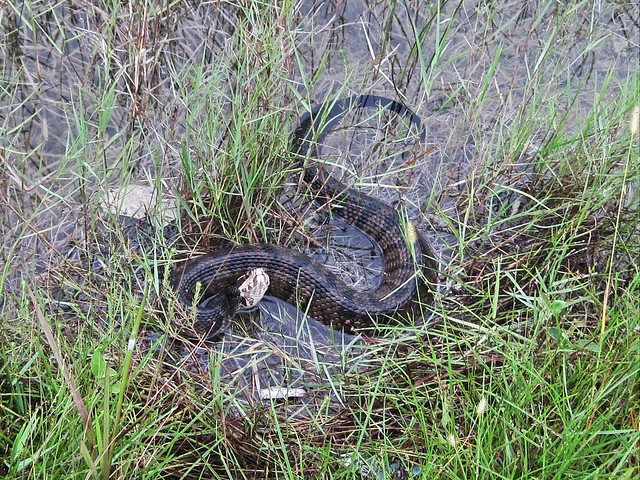
It was a medium size, about 3-4 feet long. Characteristically, it swam with its head held above the water, unlike harmless water snakes. After this I started noticing every crooked branch or any curved shadow!
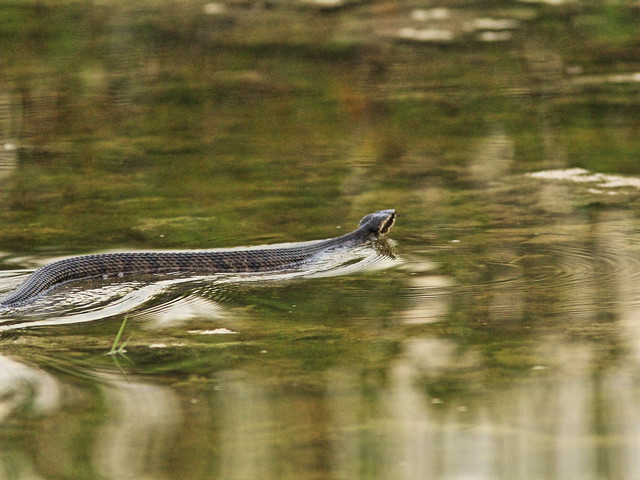
Later that afternoon, from the safety of my back patio, I enjoyed visits from a few long-legged waders, including a flock of White Ibises.
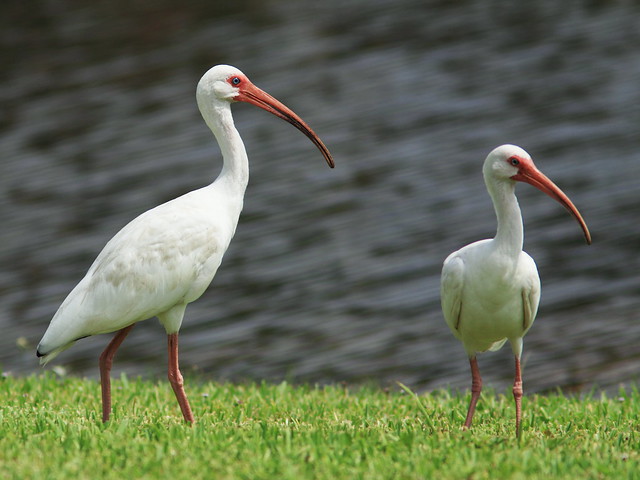
I could not get a full-body shot of this Little Blue Heron before it bolted.

This female Anhinga was an interesting visitor. She threatened me when I approached to take her picture, and engaged in a threat display before a grudging departure.
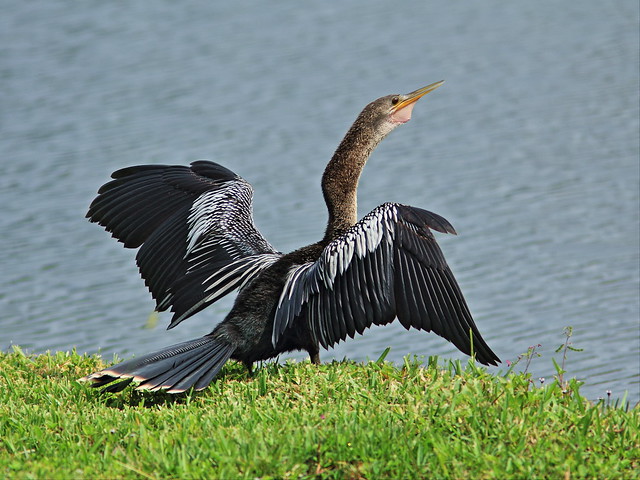
Here is a brief clip of the Anhinga's display. If it does not show up, try this link: http://www.youtube.com/watch?v=4G62BcJ_B8c&feature=youtu.be
yeah, we get the water moccasins here, too. along with the copperheads. LOVE the night-heron shots! wow!
ReplyDeleteWonderful birds! The snake is quite beautiful too. I'm glad you saw it before you steped on it.
ReplyDeleteAwesome birds and a lovely sky! The snake is a cool sighting but scary too. Wonderful photos, Ken!
ReplyDeleteBeautiful photos! The sunrise photos are especially wonderful.
ReplyDeleteLearned a lot (didn't know those dust storms reached all the way to Florida, didn't know poisonous snakes swim with their heads up).... enlarging that snake photo made me jump just to think about almost stepping on it!
ReplyDeleteReally enjoyed seeing beautiful Florida when we're not there. summer looks pretty darn wonderful in spite of the dust. (I'm wondering now if it gets to SW Florida, where we hang out.)
Glad you saw that snake in time! The night heron shots are beautiful. Love the Anhinga threat display.
ReplyDeleteGreat post!! Boom & Gary of The Vermilon River, Canada.
ReplyDeleteVery interesting that the dust comes all that way from Africa. It certainly creates some beautiful colors in the sky and on the wildlife. The threat display from the Anhinga is amazing.
ReplyDeleteI was going really well perusing all your beauties, 'til the snake arrived. I about had a heart attack!!
ReplyDeleteI did not know that about the dust 'til today. Did you know that Sahara means desert in English?
SHALL I JUST SAY, GORGEOUS, OUTSTANDING, BRILLIANT AND STUNNING, ALL IN THE SAME BREATH :)
ReplyDeleteGreat series.
ReplyDeleteGorgeous photos! I love the crispness of the black-crowned night heron images. Contrasts nicely with the soft, beautiful light in your sunset images.
ReplyDeleteGreat shots of your "dusty" skies!
ReplyDeleteWatch your step in that grass! Yikes! Still, they have their own beauty, don't they?
Gotta love those laser-beam eyes of the night heron.
Very nice series, Ken!
Great shots and I sure didn't know anything about Saharan dust- thanks for sharing that, very interesting. Cottonmouths- we got plenty here...horrible creatures!
ReplyDelete